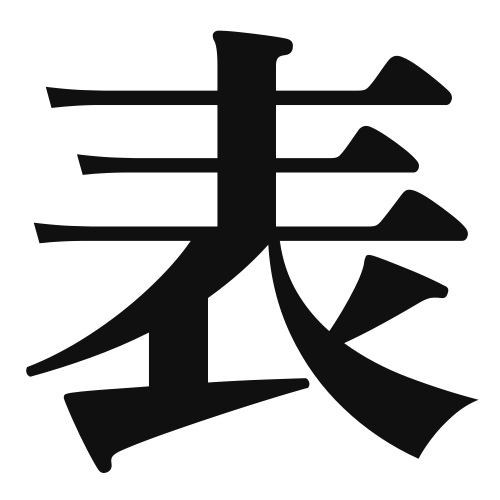1. Overview of Meaning
The kanji “表” (pronounced “hyō” or “omote”) primarily means “surface,” “table,” or “list.” It is often used to refer to the front side of something or to indicate a representation of data or information.
2. Formation and Radical
The kanji “表” is a compound character (会意文字) that combines the elements of “衣” (clothing) and “報” (report). The “衣” radical suggests a covering or surface, while “報” relates to conveying information. The radical for “表” is “衣,” which indicates its connection to surfaces or coverings.
3. Examples of Usage
Common words that include “表” are:
- 表面 (ひょうめん, hyōmen) – surface
- 表現 (ひょうげん, hyōgen) – expression
- 表計算 (ひょうけいさん, hyōkeisan) – spreadsheet
Example sentences in daily conversation:
- この表面は滑らかです。 (このひょうめんはなめらかです。) – This surface is smooth.
- 彼の表現はとてもユニークです。 (かれのひょうげんはとてもユニークです。) – His expression is very unique.
4. Synonyms and Antonyms
Similar kanji with related meanings include:
- 面 (めん, men) – face or surface, often used in a more general sense.
- 側 (がわ, gawa) – side, which refers to a lateral aspect rather than the front.
Antonyms include:
- 裏 (うら, ura) – back or reverse side, indicating the opposite of “表.”
5. Cultural and Historical Background
The kanji “表” is deeply connected to Japanese culture, particularly in contexts like art and design, where the surface of an object can convey meaning. It is also used in various proverbs and idiomatic expressions, such as:
- 表裏一体 (おもてうらいったい, omoteura ittai) – “the two sides of a coin,” indicating that two seemingly opposite things are interconnected.
This reflects the idea that appearances and underlying truths are often linked in Japanese philosophy.
